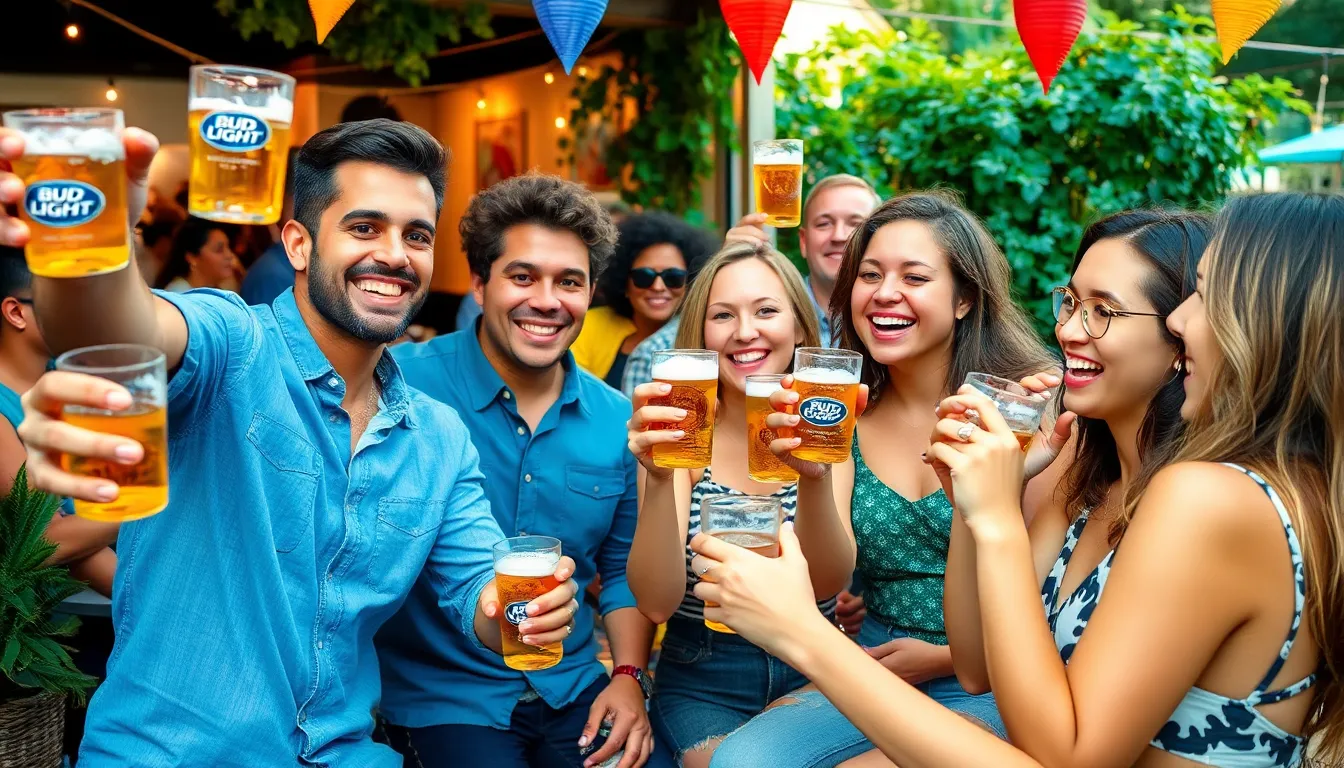In the wild world of beer, few brands have stirred the pot like Bud Light. Once the reigning champ of the American beer scene, it faced a storm of controversy that left many wondering if it could ever bounce back. Picture this: a beloved beverage suddenly at the center of a social media frenzy, with memes flying faster than a cold can on a hot summer day.
Table of Contents
ToggleBackground of Bud Light’s Decline
Bud Light experienced a significant downturn, affecting its position in the American beer market. Controversies surrounding the brand led to a rapid decline in consumer trust.
Initial Sales Decline
Sales for Bud Light fell sharply in 2023, with reports showing a 25% decrease in sales volume in the first half compared to the previous year. This decline marked a historic low for the brand, as many loyal customers shifted towards competitors. Similar products from other breweries gained market share as Bud Light’s reputation faced intense scrutiny. It took just a few months for sales figures to demonstrate the consequences of the controversies.
Reasons for the Decline
The reasons for Bud Light’s decline are multifaceted. Significant backlash on social media influenced public perception negatively. A marketing partnership with a controversial figure sparked outrage, alienating a substantial portion of its customer base. Shifting consumer preferences towards craft beers further exacerbated the issue. An overreliance on traditional marketing strategies limited the brand’s ability to connect with new audiences effectively. Brand loyalty diminished as consumers sought alternatives that better aligned with their values.
Marketing Strategies Implemented

Bud Light has taken significant steps to recover from its recent struggles. The brand initiated several marketing strategies aimed at revitalizing its image and reconnecting with consumers.
New Advertising Campaigns
New advertising campaigns focus on inclusivity and celebrating diverse audiences. These ads feature relatable scenarios, showcasing consumers enjoying Bud Light in various social settings. Each campaign aims to highlight brand values through authentic storytelling. Engagement with influencers also plays a pivotal role in these efforts, as collaborations reach wider audiences. Moreover, Bud Light embraced humor, lifting the brand’s image while addressing previous controversies. The refreshed marketing materials aim to resonate with both longtime fans and newcomers alike.
Target Audience Re-engagement
Target audience re-engagement strives to rekindle relationships with former loyal customers. Specific demographics, especially younger drinkers, are prioritized through tailored messaging. Social media platforms act as a primary channel for interaction, with engaging content shared regularly. Feedback loops invite consumers to share thoughts, ensuring the brand listens actively. Events and promotions also feature prominently, creating opportunities for in-person experiences that younger audiences can enjoy. Capturing the essence of community, these efforts foster connections that the brand had previously lost.
Sales Recovery Analysis
Bud Light’s path to recovery has been under close scrutiny following significant sales declines. The brand’s efforts focus on reversing negative trends and fostering renewed consumer interest.
Sales Data Overview
Recent sales data highlights a continued struggle for Bud Light. The first half of 2023 revealed a dramatic 25% decrease in sales volume. This decline represents a historic low for the brand, primarily due to customer shifts towards competitors. Despite these challenges, recent promotional campaigns signal a potential turnaround. Early indicators show slight increases in sales in select markets, suggesting that new strategies might slowly resonate with audiences.
Comparison with Competitors
Bud Light’s decline contrasts sharply with rival brands. Competitors like Miller Lite and Coors Light have reported sales growth during the same period. This growth stems from effective marketing strategies that appeal to evolving consumer preferences. Many consumers have gravitated towards craft beers and premium offerings, leaving Bud Light behind. Strengthened connection with customers by competitors emphasizes authenticity and shared values. In contrast, Bud Light’s recovery efforts aim to realign the brand with today’s market demands to reclaim lost ground.
Consumer Perception
Bud Light’s recovery hinges significantly on its consumer perception. Loyalty issues arise as former customers gravitate towards competitors, causing further sales declines.
Brand Loyalty Challenges
Diminished brand loyalty affects Bud Light profoundly. Shifts in consumer preferences toward craft beers mirror the growing demand for authenticity and unique experiences. Market studies reveal a 25% drop in Bud Light’s sales volume during early 2023, highlighting shifting priorities among drinkers. Competing brands, such as Miller Lite and Coors Light, capitalize on this trend, enhancing their market foothold through modern marketing strategies. Many younger consumers favor brands aligning with their ideals over those relying on traditional advertising. Encouragingly, Bud Light has acknowledged the need for change, yet rebuilding trust among loyal customers remains an uphill battle.
Impact of Social Media
Social media plays a crucial role in shaping brand perception. Negative conversations surrounding Bud Light flooded platforms, amplifying backlash during the controversial marketing campaign. Consumers actively voice their dissatisfaction, influencing friends and followers, which creates a ripple effect. Viral memes often illustrate the ironic shifts in brand loyalty, pushing some consumers further away. However, Bud Light’s re-engagement efforts through targeted social media interactions demonstrate responsiveness. Collaboration with influencers helps the brand reach diverse audiences. Establishing a positive narrative requires consistent effort and authentic engagement in today’s digital landscape.
Current Market Position
Bud Light’s current market position reflects the ongoing effects of its recent controversies and recovery efforts. The brand’s overall sales continue to show signs of fluctuation across various regions.
Regional Variations in Sales
Sales results vary by region, showcasing a mixed performance for Bud Light. Markets in the Midwest show some signs of recovery, with a reported increase of 5% in select areas. However, regions on the West Coast exhibit a continued decline, experiencing a drop of 30% in sales compared to the previous year. These variations illustrate the complexities of consumer loyalty, suggesting some areas may still hold potential for growth despite earlier setbacks. Competitors like Miller Lite and Coors Light thrive in these markets, capitalizing on their strong marketing strategies and appealing to local preferences.
Future Projections
Future projections indicate that Bud Light’s recovery depends heavily on re-engaging consumers and adapting to evolving trends. Analysts predict a challenging landscape ahead, with a modest 3% to 5% growth in sales if effective strategies are implemented. Continued focus on diversity in marketing and addressing consumer feedback will play key roles. The brand targets younger audiences specifically, aiming for increased presence on digital platforms. Monitoring evolving consumer preferences becomes essential for future success, especially as craft beers maintain growing popularity. Consistent efforts to rebuild trust may create opportunities for Bud Light to reclaim its status in the competitive beer market.
Bud Light’s journey through controversy and declining sales reflects the challenges faced by brands in a rapidly evolving market. While early signs of recovery are emerging in specific regions, the brand’s ability to regain consumer trust remains uncertain.
Targeted marketing strategies and a focus on inclusivity are steps in the right direction, yet the competition continues to thrive by resonating with shifting consumer preferences. As Bud Light navigates its path forward, the emphasis on authentic connections and adapting to market demands will be pivotal.
The future holds potential for modest growth, but only if Bud Light can effectively engage its audience and rebuild its reputation in an increasingly crowded landscape.




